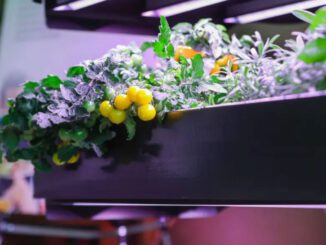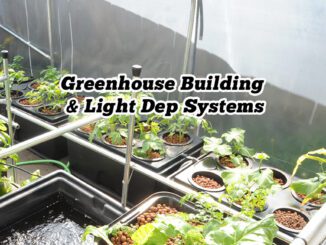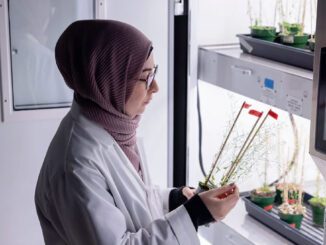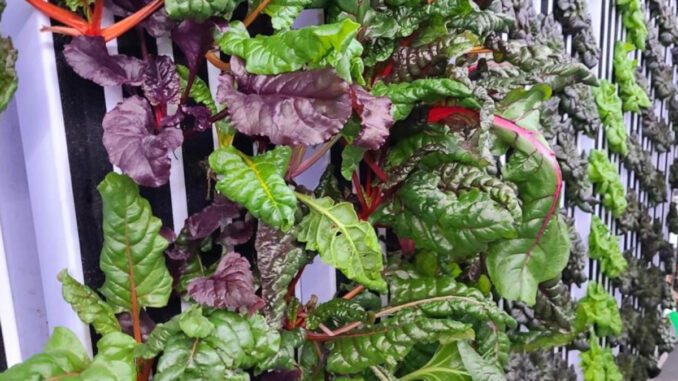
Can hydroponic farms solve food access issues on East Side?
Food Bank Hydroponic Farming | Dave Debo |
When temperatures dip below zero, it’s too cold for farmers to grow fresh produce in Buffalo. But at Feed More Western New York, the food bank has found a way that helps bring food access to residents of Buffalo’s East side, and beyond.
And it’s an idea that is likely to sprout up elsewhere too.
In Western New York there are two projects —one planned and one underway—that either do or hope to use hydroponic farming as a way to bring food to areas that need it.
Feed More
In the parking lot of Feed More’s headquarters on James E. Casey Drive, there are two large shipping containers, each with the capability of growing what would otherwise require from 2 to 6 acres of farmland.

IMAGE: One of two hydoponic container farms at Feed More WNY’s headquarters
The container farm supplies fresh produce that Feed More uses in their farmers markets – an oasis in the food deserts on Buffalo’s East Side and elsewhere.
“We are very fortunate to have the ability to grow these quantities so we can get it out into our mobile farm trucks and get it distributed into the community, ” says Feed More’s Catherine Shick.
” We know that a lot of people have difficulty accessing fresh fruits and vegetables, whether that is due to expenses, whether that’s due to the fact that they may live in a food desert. So by having these produce items available on our farm record tracks, we can help improve food access throughout Western New York,” she says.

Adjacent to the shipping containers are large panel trucks, with canopy windows that open outward like a food truck, to create mobile farmer’s markets, that can be driven to food deserts regardless of the weather.
In the past they’ve set up at places like Westminster Commons on the East side—about a half an hour walk from the nearest grocery – store—which in this case— is the Tops shooting scene on Jefferson.
“It allows us to grow fresh fruits and vegetables year round, it really lets us focus especially on that fragile types of produce those lettuces, those kale, things that may be easily damaged during transport, we can take that middleman of transportation right out of it and grow it here on our property and quickly get it out on our farm market for distribution into the community,” Shick says.
One of the most requested items is our curly kale at the moment, we like to not only distribute the kale, but also provide recipes on ways you can prepare it”
Catherine Shick, Feed More WNY
Inside the container panels feature lettuce heads
popping out of large dividers like some sort of flowered wallpaper.
“I probably harvested 75 heads the past couple of days for this week, to get on the trucks. And it’s probably at least that ready and ready to go next week,” says container farm manager Alex Schmittendorf, who adds that one container can grow as much as two to six acres of traditional farmland.

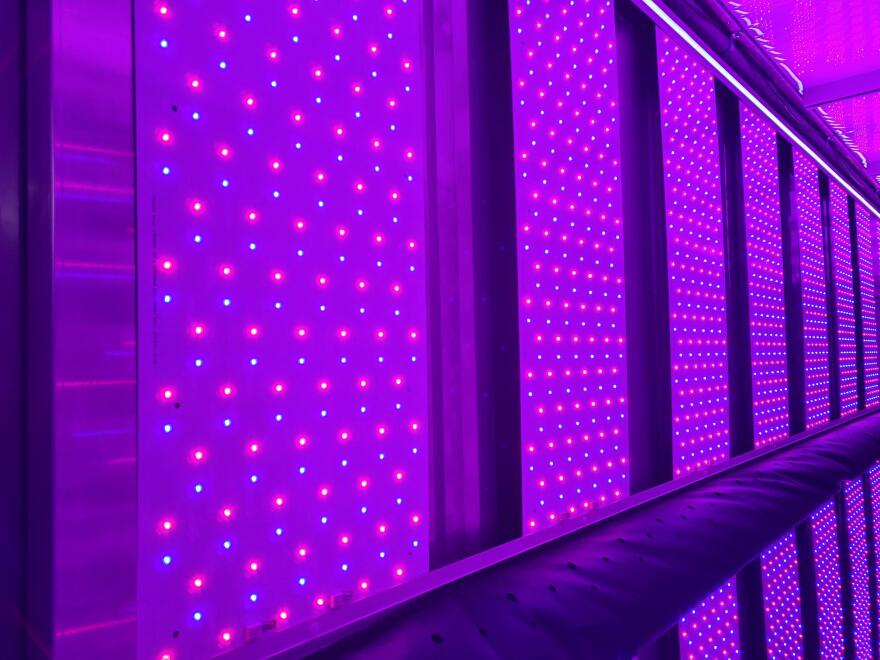
The spacing of the panels, their LED lights, and a nutrient-fortified water that trickles through the plant’s plastic growing material allows for a high yield in a small space.

” And then then you walk sort of towards the back of the, the container here, and we have four growing panels that have either side of them, it’s a total of 85 individual panels, that the seedlings sit in, and then three double sided walls have led LED lights as well,” Schmittendorf explains.
The growing racks are stacked next to each other– similar to bookshelves in a library- with cranks that slot more shelves into a smaller space opening them one at a time as needed for harvesting.
Demand is strong. Shick says they have a second container that is operational and ready to grow another 2 to 5 acres sometime after planting.
And while some farms nationwide report high start up and even higher energy costs. Feed More’s work is part of a project that came with grant funding.
Despite the economics that sometimes require subsidy, Feed More isn’t alone either. By one estimate, there are more than two thousand vertical farms in the United States, and it’s expected to become a $30 billion industry by 2030.
Project Rainfall

IMAGE:The possible location of an East Side Food Hub, featuring a Farmers’ Market and hydroponic gardening facility, at the gutted former Houdaille Industries plant on Delavan Ave.
Rita Hubbard Robinson has dreams of a food hub on Delavan Avenue—in the old Houdaille Manaufacturing plant, to include a farmer’s market and a similar larger hydroponics facility sometime next year.

She is awaiting designation as the preferred developer of the former shock absorber plant at 547 Delavan Avenue, near the Northland Job Training Center and AKG Art Gallery’s temporary site.
Yet now, all that is there is an empty shell.
“ You definitely had to be a visionary to see past the rust and the steel but we’ve been looking at this space since 2009…” she says pointing out what the project would look like.
” So you see these steel frames and everything from the second girder all the way over would be the grow area. We start with hydroponics and we would fold in an aquaculture for aquaponics over time and it would be grow beds, you know all the horizontal grow beds all the way up and we will be able to grow lots of lots of food lots and lots of produce,” Robinson says.
HEAR MORE FROM ROBINSON ON THE EAST SIDE’s FOOD NEEDS — AND TOUR HER DEVELOPMENT SITE— DURING “BUFFALO WHAT’S NEXT ?” TUESDAY MORNING AT 10 A.M.

IMAGE:Rita Hubbard Robinson at the possible site of her Delavan Avenue food hub


Original Article: https://www.wbfo.org/local/2023-03-01/can-hydroponic-farms-solve-food-acess-issues-on-east-side

